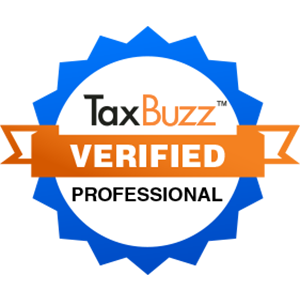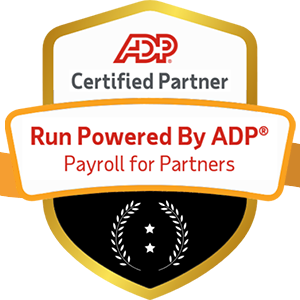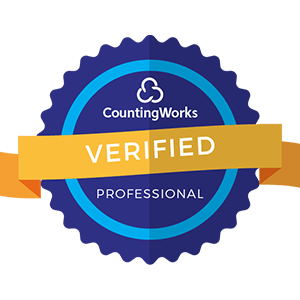
Knowledge is power; effectively managing organizational knowledge is critical for organizations seeking a competitive edge. Knowledge management (KM) is creating, sharing, using, and working knowledge and information within an organization. It aims to get the proper knowledge to the right people at the right time, enabling more informed decision-making and improving efficiency and effectiveness across all operations.
In today’s rapidly evolving world, KM is more vital than ever for business success. Organizations that tap into the knowledge of their employees and leverage it effectively are better equipped to innovate, solve problems quickly, avoid repeated mistakes, capitalize on new opportunities, and meet organizational goals. As management guru Peter Drucker famously stated, “Today, knowledge has power. It controls access to opportunity and advancement.”
This in-depth guide will explore the fundamentals of knowledge management, its benefits, and how organizations of all sizes can implement successful KM practices to gain a sustainable competitive advantage.

The term “knowledge management” was coined in 1986. Still, the actual practice emerged in the mid-1990s as companies realized that knowledge is a valuable intangible asset that provides a competitive edge if adequately managed.
Knowledge management refers to the strategies, processes, and tools an organization deploys to create, identify, capture, structure, value, distribute, and share knowledge across the organization to support better decision making, improve efficiency through reuse and learning, and create new knowledge for competitive advantage.
Simply put, KM ensures that the correct information reaches the right people at the right time, enabling an organization to achieve its objectives more effectively.
Knowledge management follows a cyclical process that supports continual learning and improvement. The critical stages in the KM cycle include:
This continuous process of creating, capturing, organizing, sharing, and applying knowledge allows organizations to improve and outperform competitors continuously.
The cyclical process of knowledge management. Source: BrightHub Project Management
There are two main types of knowledge - implicit and explicit. Understanding the difference between implicit and explicit knowledge is essential for managing knowledge effectively.
Here's a simple example illustrating the difference:
While explicit knowledge can be codified and transmitted easily, tacit knowledge is more brutal to extract. However, since tacit knowledge offers more profound insights and expertise, KM programs use techniques like exit interviews, mentorship, and communities of practice to capture this knowledge.
Investing time and resources into knowledge management significantly benefits large and small organizations across all industries and sectors. Let's explore some of the top benefits of KM:
Knowledge management ensures decision-makers can quickly access relevant facts, data, expertise, and insights when needed. This enables data-driven and informed decision-making across the organization.
Rather than make gut instinct calls or repeat past mistakes due to lack of information, employees can find documents, case studies, analytics, and expert perspectives to determine the best course of action. This results in decisions that aid growth and profitability.
KM eliminates "reinventing the wheel" scenarios common in large organizations without proper knowledge transfer.
With KM systems, employees have on-demand access to approved documents, best practices, FAQs, training materials, and past project resources. This promotes efficiency by cutting down time spent searching for information or finding solutions from scratch.
Studies show that knowledge management systems result in 25-35% quicker project completion times due to improved information access. Employees can instantly find resources needed to complete tasks faster.
Innovation stems from leveraging knowledge to generate new ideas and insights. KM fosters innovation by:
By managing organizational knowledge, you empower employees to think outside the box and rapidly turn ideas into reality.
New employees require extensive training to become productive and get up to speed. Knowledge management dramatically accelerates onboarding and staff training by providing quick access to:
Rather than enroll new hires in lengthy classroom-based training, they can get trained faster via KM systems. This results in greater productivity in a shorter period.
Organizations stand to lose critical knowledge as veteran employees with years of experience retire or resign. All the tribal knowledge and insights they possess go with them.
Knowledge management preserves this intellectual capital within the company using techniques like exit interviews, mentorship programs, documentation, and training.
Capturing processes, best practices, and know-how of experts before they leave ensures the next generation of employees can continue seamless operations.
Silos arise when teams and departments only share knowledge within themselves and not across the organization. This restricts access to potentially helpful information in other business units.
Robust knowledge management breaks down these silos by enabling seamless access to expertise company-wide. Collaborative tools connect employees across locations, departments, and roles to exchange ideas, documents, and insights.
Breaking silos results in improved coordination and the ability to leverage knowledge across the organization for better performance.
The collective knowledge of an organization is a powerful asset. Effectively harnessing it using KM provides your company key advantages, including:
With practical knowledge management, your organization gains intellectual assets that are difficult for competitors to replicate, buy, or substitute. This results in sustained competitive advantage
Knowledge management empowers customer-facing staff to provide exemplary service by arming them with the information and expertise to resolve customer queries and requests promptly.
Easy access to customer data, previous interactions, product specs, manuals, pricing guides, and staff expertise helps agents delight customers. KM also aids in analyzing customer needs to provide personalized recommendations and tailored solutions.
KM systems like centralized document repositories, expertise locators, and communication platforms connect employees across distributed locations and departments.
This facilitates seamless collaboration, brainstorming, resource sharing, and issue resolution without geographic or organizational boundaries broad collaboration results in diverse perspectives and holistic decision-making.
Knowledge workers create the most value by applying expertise to solve problems and improve operations. But without readily available knowledge, they operate sub-optimally.
KM minimizes productivity bottlenecks like information scattering, duplication of efforts, and fruitless search times. Easy access to contextual knowledge coupled with collaboration accelerates the work of knowledge professionals.
According to Deloitte, KM improves knowledge worker productivity by 25-35%. This generates tremendous value.
Implementing successful knowledge management is both an art and a science. Organizations must keep some critical considerations in mind:
Like any strategic initiative, visible support from senior management is vital for KM's success. Leadership must actively encourage the use of KM systems and contribute knowledge to signal endorsement. Allocating a KM budget and dedicated resources also helps drive adoption.
Many employees hoard knowledge to protect their status as subject experts. KM requires a culture that rewards sharing insights and collaborating for the greater organizational good. Training, incentives, and leading by example help make knowledge hoarders contribute their expertise.
The right KM tools and systems enable the capture and transfer of knowledge. However, a human touch is essential for exchanging tacit knowledge via mentoring, storytelling, and informal networks. Balance automated and interpersonal KM to manage knowledge holistically.
KM must focus on finding and delivering the proper knowledge to people at the right time. Contextual and personalized knowledge aids applications rather than overwhelming users with everything.
Closely align KM programs with business goals like improved client satisfaction, faster product launches, increased sales, etc. This helps secure buy-in and funding by showing the tangible impact on the bottom line.
View KM as an ongoing journey rather than a one-off project. Keep enhancing KM practices based on user feedback and lessons learned. Changing market dynamics also necessitate realigning KM priorities. By following these best practices, organizations can maximize their return on KM investments. Let's now explore KM in the critical business functions.

The HR department manages an organization's most valuable asset - its people. HR involves diverse functions like recruitment, training, compensation, performance management, organizational development, safety, and culture.
Smooth execution of these strategic functions requires extensive knowledge - from labor law expertise to best practices for nurturing talent. A robust KM program is thus invaluable for an effective HR department.
Here are some key ways knowledge management benefits HR:
Inducting new employees and aligning them with company values is critical for HR. KM tools like learning management systems, online courses, training manuals, mentors, and discussion forums enable rapid onboarding and skills development.
Finding and nurturing the right talent is an HR priority. KM techniques like peer learning, internal mobility, and succession planning help engage and retain top talent within the organization.
HR needs to identify potential candidates with the right skills and cultural fit. A knowledge base of existing employee profiles aids recruiters in sourcing suitable talent efficiently.
HR handles extensive company policies, rules, and regs around compensation, diversity, performance, discipline, etc. Centralizing this information on a KM portal makes it easily accessible to employees and HR.
HR metrics like turnover, absenteeism, performance, and productivity help guide executive decisions. Knowledge repositories like HR dashboards facilitate data-driven decision-making and required reporting.
KM tools that connect employees foster a collaborative culture. This makes it easier for HR to implement organizational development and change management programs.
Learning and development programs need constant evolution to stay relevant to changing skill requirements. Using KM to capture learner feedback and measure training effectiveness helps enhance L&D quality.
HR ensures legal and regulatory compliance across all people processes in areas like equal opportunity, harassment, health & safety, etc. Access to updated policies and laws via KM systems is crucial.
Analyzing KM systems containing staff tenure, performance, salaries, and engagement data gives HR valuable people insights to shape organizational strategy.
An organization's employer brand hinges on providing candidates with a positive experience. KM equips recruiters with information to engage prospective applicants throughout the hiring process effectively.
With KM, the HR team transforms into a strategic partner that helps the organization adapt and succeed amidst rapid change. Let's now see how KM powers another vital business function -finance.

The finance department is pivotal in managing budgets, cash flows, investments, accounting, and overall fiscal discipline. Finance teams handle sensitive information that influences strategic moves and operational costs.
For finance professionals, having the proper knowledge at hand is critical. Some key ways knowledge management boosts financial management capability:
Veteran finance staff gain valuable domain knowledge over time. Capturing this expertise using KM techniques like training manuals prevents know-how loss when experts eventually move on.
Vital financial documents like past budgets, invoices, contracts, and statements must be readily available. Centralized KM repositories make it easy to store and retrieve these files securely.
Generating financial statements, management reports, and tax documents is facilitated by easy access to period financials, legal acts, and analysis templates via KM systems.
Finance must ensure policies for financial controls, asset security, accounting standards, etc., are adhered to enterprise-wide. Storing these documents in a KM portal makes compliance more manageable.
Timely access to past financial statements, budgets, third-party reports, and team insights helps finance executives make prudent fiscal decisions. KM delivers this knowledge advantage.
Onboarding new finance staff and keeping existing employees updated on changing regulations and accounting standards is enabled by KM tools like e-learning modules.
By centralizing risk assessment protocols, audit reports, and lessons learned, KM enables the finance team to identify and mitigate emerging risks enterprise-wide proactively.
Easy access to completed audits, financial documents, accounting trails, policies, and past issues via KM systems ensures audit readiness and swift resolution of auditor queries.
Rem subscribing to external knowledge sources and alerts facilitate keeping abreast of the latest tax laws, financial regulations, and compliance requirements.
Finance can collaborate with external accounting firms and knowledge networks to exchange insights, benchmark practices, and certify staff on the latest standards. With KM, the finance team improves productivity, minimizes errors, and provides strategic input for executive decisions and growth plans.
Let's now explore some key ways organizations can implement successful knowledge management:
Having a dedicated leader spearhead the KM function helps drive execution and adoption. The CKO crafts the KM strategy, sets goals, obtains resources, and rallies the organization toward a knowledge-driven future.
Before launching KM initiatives, comprehensively audit existing knowledge assets and flows. Identify content types, their creators, users, what processes they enable, and gaps. This provides a KM baseline.
Classifying and organizing information using a defined taxonomy, keywords, and metadata enables findability and discoverability across knowledge repositories.
Create clear policies around mandatory knowledge contribution, relevance assessments, confidential data, security, access permissions, and reuse to guide KM efforts.
Leverage tools like intranets, document management systems, expertise locators, e-learning portals, and collaboration platforms tailored to your industry context. Keep the technology stack scalable.
Encourage employees to use KM systems by highlighting how it benefits their work. Provide small rewards and recognition for contributing valuable knowledge. Feature power users in newsletters.
Study challenges faced and successes achieved at project milestones or business events to derive critical lessons learned. Feed these vital insights back into knowledge repositories.
Define KM success metrics like time savings, productivity gains, and financial return generated. Quantify KM benefits to showcase value and obtain continued funding.
Regularly gather user feedback to address pain points and enhance KM processes. Continually evolve KM systems to support business objectives as the external environment changes.
Collaborate with customers, suppliers, industry bodies, universities, and other enterprises to co-develop cutting-edge knowledge and benchmarks to stay competitive.
Conduct training programs and provide resources to enhance the ability of knowledge workers to create, share, and apply knowledge for maximum value
Identify respected internal experts across functions as knowledge stewards responsible for contributing and vetting knowledge in their domain.
Collaborate with customers, suppliers, universities, and industry networks to co-develop new knowledge and stay updated.
In an increasingly complex and competitive world, focusing on knowledge management is no longer optional - it is imperative for business survival and industry leadership. Organizations that fail to effectively manage their intellectual capital face extinction in the long run.
By implementing robust and holistic KM practices, companies can increase efficiency, spur innovation, retain talent, improve decision-making, break down silos and gain competitive advantage. From onboarding recruits to shaping business strategy, knowledge is the fuel that powers organizational success.


